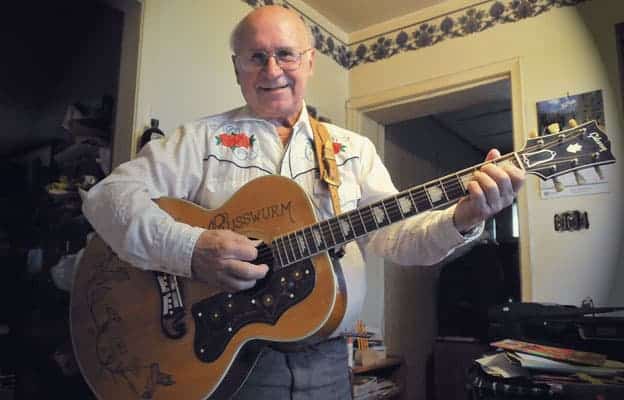Oftentimes, musicians can depend on a certain amount of predictability when accompanying a silent film. They can prepare something bouncy for Charlie Chaplin, or something adventurous for Douglas Fairbanks, or something romantic for Rudolph Valentino. But what, exactly, is the VOC Silent Film Harmonic to do when it encounters Luis Bunuel and Salvador Dali’s surrealist landmark Un Chien Andalou at the Registry Theatre on April 11?
“We try to match the scene, but this one, what do you do?” said Ted Harms, bass player for the five-man ensemble. “Because it’s different from scene to scene, and it’s by design not a linear movie. There’s no plot, there’s no rising or falling action.”
![The VOC Silent Film Harmonic has been improvising scores to silent classics for nearly five years. From left to right: Ted Harms, bass; David Hunsberger, clarinet; Steve Lederman, percussion and brass; Bradford Nowak, drums; Wade Whittaker, guitar.[submitted]](https://www.observerxtra.com/content/images/wp-content/uploads/2013/03/arts4.jpg)
Even as part of a silent film surrealism night that also includes Jean Epstein’s The Fall of the House of Usher (1928) and Jean Painlave’s La Daphnie (1929), Bunuel and Dali’s 1928 provocation is a genuine oddity. From its notoriously violent early image involving a pig’s eyeball, to its sexually-charged climax, the plotless film was specifically designed to shock the audience out of its complacency. (According to legend, Bunuel hid behind the screen at the premiere armed with stones in case the agitated audience rioted).
“There were either one or two records they would play to accompany it,” said Harms. “One was an Argentinean tango, and the other was a vocal aria from a Wagner opera. So it’s all about the juxtaposition and being shocked … You need to be shocked out of your conditioned responses.”
This is the sort of uncertainty that the members of the Silent Film Harmonic have embraced in their nearly five years working together. All of their scores are improvised, albeit within certain parameters.
“I know this sounds funny to a lot of people, but we actually do rehearse the improvisation,” said Harms. “For some movies, what I’ve done is I’ve put together some music to say, ‘Here is music that, if you want, you can play to accompany certain scenes.’ I write up a schedule to say, ‘This is who I want playing when. We all play at the beginning, then I want these two people playing at this scene or the next scene, then it’s going to be somebody else.’
“So musically, we are changing the palette – it’s not just five of us all playing at the same time.”
Still, the group finds itself heading in unpredictable directions, and Harms finds the mix of strategy and uncertainty can lead to some surprise successes. “There are times when we’ve had a performance and I’ve said, ‘I thought we lost the thread in the middle,’ and an audience member says, ‘But that was the best part!’ It’s hard to know.”
With five years of performances under their belt, to such silent perennials as Nosferatu, The Battleship Potemkin, and The Man Who Laughs, Harms has found the collaboration increasingly comfortable.
“You start to trust what everybody else is going to do,” said Harms. “We’re still not exactly sure what everybody else is playing, but we can trust each other that there’s not going to be anyone who’s going to veer off into a polka.”
Which, come to think of it, may possibly do Bunuel and Dali justice.
The VOC Silent Film Harmonic’s Surrealist Festival will take place at the Registry Theatre in Kitchener on April 11, beginning at 8 p.m. Tickets are $15 at the door, or at the Centre in the Square box office at 519-578-1570 or at www.centre-square.com. Tickets are $10 with a food bank donation.








